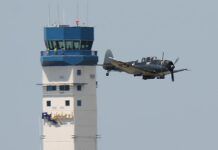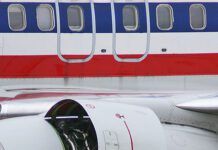 Februaryis insurance renewal time for me. I’ve been an airplane owner since 1974 when I realized adream and bought my beloved 1966 Mooney Super 21, N9324M. Since then I have owned threeother airplanes, including my current 1979 Aerostar 601P, N6069N. For the past 23 years,every February has meant calling my agent and getting quotes for my next year’s policy.
Februaryis insurance renewal time for me. I’ve been an airplane owner since 1974 when I realized adream and bought my beloved 1966 Mooney Super 21, N9324M. Since then I have owned threeother airplanes, including my current 1979 Aerostar 601P, N6069N. For the past 23 years,every February has meant calling my agent and getting quotes for my next year’s policy.
My Aerostar is presently valued at $150,000, and Iinsure its hull for that full value. I also carry $5 million "smooth" inliability and property damage coverage (to cover damage or injury I might cause others).In insurance parlance, "smooth" means that there are no sub-limits to thesecoverage limits, such as a limitation of $1 million per person, per seat or peroccurrence. My policy has no such sub-limits.
I am a commercial, multi-engine, instrument-rated pilot with over 4,000 hours of totaltime and about 1,700 hours in Aerostars. I have gone through simulator-based Aerostartraining with Piper, FlightSafety, Simcom, and Recurrent Training Center, and I do suchrecurrent training every year. In more than 36 years of accident-free flying, my onlyinsurance claim was due to the lightning strike I wrote aboutin AVweb last year. For the past several years, USAIG has written the insurance onmy aircraft.
 So you can imagine how flabbergasted I was to open my insurance renewal letter thisyear to find a 72% increase in premiums. To be specific: last year’spremium was $4,400 and this year’s premium quote from USAIG was $7,570, a whoppingincrease of $3,150.
So you can imagine how flabbergasted I was to open my insurance renewal letter thisyear to find a 72% increase in premiums. To be specific: last year’spremium was $4,400 and this year’s premium quote from USAIG was $7,570, a whoppingincrease of $3,150.
Wow! OUCH! Did somebody accidentally hit the multiply key instead of the plus key whentotaling up my premium? Or mistake my Aerostar for an Astrojet or an Astra? Or think maybeI was running a Part 135 charter operation instead of just a Part 91 aircraft?
What’s going on here?
I phoned the insurance agent from whom I’ve purchased aircraft insurance for the lastthree years to inquire into this shocking quote. He told me that aviation insurers weretrying to get away from "high limit" liability policies, and that policies with$5 million "smooth" liability limits were getting much more expensive and harderto find. In fact, he said he had obtained several other quotes from other underwritersthat were even higher than USAIG’s.
The agent told me that if I was willing to settle for "a more normal" $2million liability limit, USAIG would be happy to sell it to me for a premium of just$4,200 (about what I paid for $5 million in coverage last year), but if I wanted the $5million limit I was going to have to pay an additional $3,350 for the incremental $3million in liability. Subtracting out the hull insurance component of the premium,this meant I was actually going to have to pay more for the extra $3 million in liabilitycoverage than I would for the first $2 million!
That didn’t make sense to me. It didn’t make sense to anyone else I talked to, either.Only the insurance companies thought it was reasonable.
Asking the experts
I called Bill Welbourn, a Senior Vice President at USAIG’s home office in New York, andasked him how come the additional $3 million in liability coverage was so expensive. Hetold me that USAIG’s "book of business" of $5 million liability policies wasvery small. According to Welbourn, about 70% of the company’s aviation policies arewritten for $1 million in liability coverage, often with sub-limits of $100,000 per seat.Only 5% of their policies are for $5 million and above.
At the same time, Welbourn told me, more and more of the liability claims "werereaching into the excess of $2 million amounts." He indicated that most liabilityplaintiffs go after the defendant’s full amount of insurance, so that having a higherpolicy limit all but guaranteed higher claims. This, he explained, is why liabilityinsurance costs about as much for the additional $3 million as it does for the first $2million. As to why my particular policy went up so much in one year, Welbourn was onlyable to tell me that it was due to USAIG re-evaluating their pricing on $5 millionliability to bring it more in line with their actual costs.
Another aviation oriented insurance expert, Sandy Palley of the Pally Simon agency inJenkintown, Pennsylvania (and owner of a Piper Lance), told me that price swings in theaviation insurance marketplace are not uncommon. "Competition in the market oftendrives prices down to unrealistic levels until the insurance is no longer profitable forthe companies," said Mr. Palley. "At that point some companies leave themarketplace which reduces competition and the remaining ones realize that they have beencharging too little. Both of these factors lead to rapid rises in premium costs toconsumers," Palley explained.
I spoke with other aviation insurance agents, who told me that consolidation andmergers had reduced the number of underwriters they were able to use for aviationinsurance. "I used to get 10 to 12 quotes", one agent told us, "now I canget only 5 or 6."
Not a good thing
Anyone who knows me could have predicted that I wasn’t about to take all this lyingdown. Many hours of hard shopping around — and switching to a new agent — yielded apolicy with the $5 million "smooth" limits I wanted for about $1,000 less thatwhat USAIG had quoted initially. This was something of a victory, but a small one at best.My airplane insurance is still going to cost me almost 50% more this year than last. In atime of near-zero inflation and slowly growing wages, a 50% increase in insurance premiumsis (as Martha Stewart would say) not a good thing.
Furthermore, it seems to me that an insurance company that would raise a customer’srates by more than 50% in one year without any obvious external conditions forcing thatrise is not being fair to its customers. What if all companies, at all levels of liabilitycoverage, decided that they would like to make 50% more next year?
Be afraid. Be very afraid.
Are we headed toward an era of rapidly rising aircraft insurance costs? I don’t know ifthe increases will affect all limits of liability, or even if everyone else who carries $5million will be hit with the same sort of sticker shock that I was. But there certainlyseem to be warning signs that a critical component of the aviation cost equation — onethat affects everyone who flies — may be headed sharply higher without regard for theindustry it is serving.
I can’t predict how many aircraft owners will sell their airplanes, or how many renterpilots will give up flying altogether, if insurance rates were increased 50%. But ratehikes like the one I just endured can only hurt General Aviation, perhaps as much as theloss of strategically important airports like Meigs Field in Chicago, or the FAA holdingup field approvals of approach-certified GPS installations, or the issuance of costly ADsand Service Bulletins that don’t seem to address any demonstrable safety hazard.
We all should carry insurance. For most of us, this is not an option. To that degree,we are all at the mercy of the insurance companies. We count on them to be fair in theirpricing and claims. To me, a sudden increase of 50% for the same coverage is not fair orreasonable. USAIG has lost me as a customer as a result, but clearly this problem is notlimited to one underwriter…the pendulum seems to be swinging toward higher ratesindustry-wide.
Is this the first raindrop in a TRW++? Maybe not, but at least it is time to turn onthe radar and take a good look around … before lightning strikes.


































